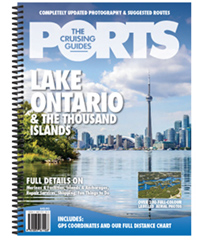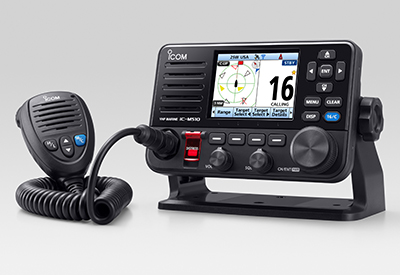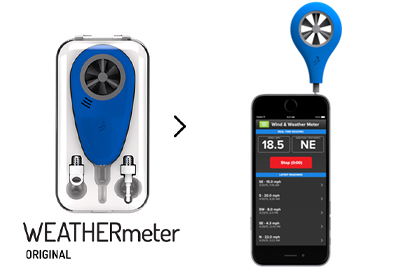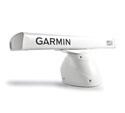America’s Cup

Story and Photos by Alex Gadamer
Innovations Rise to the Occasion
Marine electronics has just made a quantum leap forward and into a whole new realm.
The high profile of the America’s Cup has inspired the innovation of a video technology called AC LiveLine. It is an easy-to-understand video overlay that allows the best understanding of sailboat racing in this spectacular event, considered to be the oldest trophy in international sport.
AC LiveLine provides the platform for more accurate officiating, preventing ambiguous penalties and it also makes the sport a more pleasurable viewing experience. Innovation in sailboat design has increased competition between Oracle and Emirates Team New Zealand. Both teams tweaked their innovative sailboat speedsters to new heights daily as the racers worked hard to reach their goal of winning the America’s Cup.
Pioneered by Stan Honey, the groundbreaking use of AC LiveLine is a technology that makes competitive sailing accessible to home viewers worldwide. In May 2013, AC LiveLine was awarded an Emmy for extraordinary technical innovation. Using augmented reality over the standard video images allows different kinds of information to be shown to viewers and umpires alike.
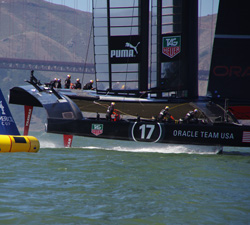 Using signals from the sensors on the 7 onboard camera systems, helicopters, chase boats and race beacons, the communication center has overlaid a graphic ladder on the course to show the exact gap between the sailboats in real time. Trailing color is another interesting graphic overlay showing where the race boats have just been in the previous moment and to depict the wind on the course. More useful still to the judges, is the buoy room around marks, since a protest is quickly determined on the water and a penalty imposed immediately. The penalty is then transmitted to the offending boat by a large LED light system aboard each yacht.
Using signals from the sensors on the 7 onboard camera systems, helicopters, chase boats and race beacons, the communication center has overlaid a graphic ladder on the course to show the exact gap between the sailboats in real time. Trailing color is another interesting graphic overlay showing where the race boats have just been in the previous moment and to depict the wind on the course. More useful still to the judges, is the buoy room around marks, since a protest is quickly determined on the water and a penalty imposed immediately. The penalty is then transmitted to the offending boat by a large LED light system aboard each yacht.
As the two America’s Cup skippers, Dean Barker and Jimmy Spithill approach a mark, they have a race management system telling them where the boundary is through a series of big flashing yellow LED lights on board. As they approach the marks the flashing gets quicker and quicker and then goes solid within 50 meters. Flashing lights of Green, Amber, Red and Blue are activated both by umpires and electronically, by boundaries that indicate the following:
Green Light- the raceboat is within 5 hull lengths of a course boundary or mark.
Amber Light – the raceboat is approaching a boundary
Red Light- means a boat is protesting and asking for a ruling by the umpires.
Blue Light- Shows the skipper and crew their raceboat has been penalized by the umpires. As a result they must slow until released by an umpire. They know they are released when the light stops flashing.
“The key is, that this is the future, so there’s nothing in the system that we won’t be able to do, by miniaturizing the units and finding another event organizer to take on the cost. There’s no reason you couldn’t run this in smaller regattas,” says Tim Jeffery Dr, Promotions, Athletes, & PR at America’s Cup
 The company behind part of this technology is Vespermarine.com. Company CEO Jeff Robbins started out in 2007 developing collision avoidance systems for recreational sailors, growing into virtual Automatic Identification System (AIS) development.
The company behind part of this technology is Vespermarine.com. Company CEO Jeff Robbins started out in 2007 developing collision avoidance systems for recreational sailors, growing into virtual Automatic Identification System (AIS) development.
Complementing a private system already used by AC organizers to manage the race and notify race boats of approaching boundaries, Vesper Marine’s technology has been implanted to address safety concerns for on-the-water spectators and general marine traffic that also uses the busy San Francisco waterway. They developed a beacon to be used in the America’s Cup. The beacon establishes a “virtual fence” around the course and broadcasts this information to the public using AIS frequencies, essentially painting the course on surrounding vessels’ dedicated AIS displays and navigation systems to clearly outline boundaries and other critical safety information. In the America’s Cup the beacon was mounted on Pier 45 in San Francisco. The Beacon has a line of sight over the entire course. Multiple virtual marks can be drawn out. The purpose is to notify sailors, coast guard and race officials of positions of the marks and the boundaries of the course. The mark location positions are sent to shore via a private data link, and that is automatically transmitted to the communications center, then reformatted to the race boats and umpire boats. The shore system draws out the boundary of the course. Another feature from video data from the AC72’s is how right-of-way changes from one boat to another as they approach a mark in real time. They can put trails on the boats to show where they’ve been showing boat speed and identification of each boat. Smart computer code uses the information from the helicopters, and chase boat and renders it over the video.
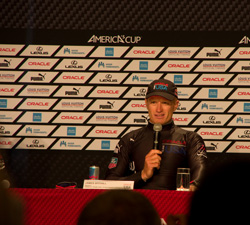 Both Oracle and Emirates Team New Zealand collected daily information from their racing boats through the use of sensors and computers. This information is then put through tests on computers and allows them to learn how to increase their speed in upcoming races.
Both Oracle and Emirates Team New Zealand collected daily information from their racing boats through the use of sensors and computers. This information is then put through tests on computers and allows them to learn how to increase their speed in upcoming races.
Indeed the difference in performance became clear in the last few races of the Cup, with both teams foiling in lighter winds faster and reaching over 30 knots upwind.
When Jimmy Spithall was asked what they had done to their sailboat in a press conference, he flatly said, “I can’t tell you”. Dean Barker of Emirates Team New Zealand chimed in with the same comment. Innovation to these boats leading up to the finish has been tight lipped from both teams, but to be sure, corporate Oracle’s computer analytics ability and racing ingenuity served them well as they came back from an 8-1 deficit to have Oracle win the America’s Cup 9-8.
The 34th America’s Cup in San Francisco was the longest-ever Cup by both number of days and races and it was the first to feature a “winner takes all” final race since the 25th America’s Cup in 1983.
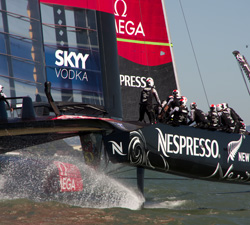 America’s Cup is a pinnacle in the sport of sailboat racing. Innovation leading up to this great event has increased both the audience’s video enjoyment and sailboat racing itself to a level not seen in most sports. In the final moments of the last race on September 25th, 2013 AC LiveLine overlaid an American Flag for the last 50 meters of the race, demonstrating how creative and versatile the innovative technology has come. Innovation rising to the occasion has led both teams to reach new heights of speed and tactics, having learned on the fly to be more competitive, showing the world how great sailboat racing has risen to the occasion.
America’s Cup is a pinnacle in the sport of sailboat racing. Innovation leading up to this great event has increased both the audience’s video enjoyment and sailboat racing itself to a level not seen in most sports. In the final moments of the last race on September 25th, 2013 AC LiveLine overlaid an American Flag for the last 50 meters of the race, demonstrating how creative and versatile the innovative technology has come. Innovation rising to the occasion has led both teams to reach new heights of speed and tactics, having learned on the fly to be more competitive, showing the world how great sailboat racing has risen to the occasion.
Alex Gadamer is a freelance photojournalist living in Hamilton, Ontario, Canada. An avid sailboat racer, this event was the pinnacle of his experience covering regattas.
In addition to this article, choose “DIY and How To” from the main menu bar then “Electronics”. There you will find a selection of electronics stories including recently added video clips where Mike Varga of Navionics will walk you through their suite of B&G electronics systems specifically for sailing and racing.
You can also chose to view the clip with Michael Range explaining the latest multi-function display and cartography features from Garmin. You will also see their gorgeous new screens that can be mounted from the back for a flush helm surface.
Photo Captions
Photo 1: Tracking these blazingly fast boats, AC Liveline is a technology that makes competitive sailing accessible to home viewers worldwide.
Photo 2: Oracle Team USA rounds a Start mark with the stern LED green light indicating they are within five hull lengths of a race mark.
Photo 3: Oracle Team USA relax upwind preparing for another race with Jimmy Spithill at the helm.
Photo 4: Jimmy Spithill at a press conference held after each race, to give reporters perspective of the race. When asked what they were doing to make their raceboat go faster, Jimmy Spithill responded, “I can’t tell you that.” Secrecy around Oracle’s amazing comeback was the order of the day, every day.
Photo 5: Dean Barker skipper of Emirates Team New Zealand seen in action travelling up to 55 MPH in their AC72.


